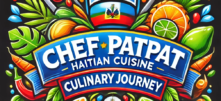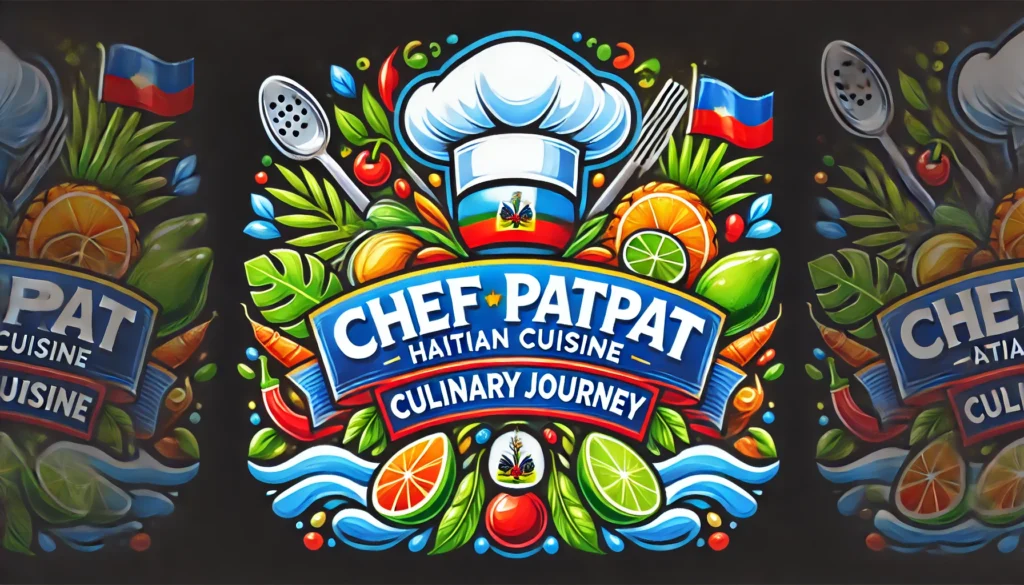Haitian Cuisine
A Culinary Journey
Haitian cuisine, a vibrant blend of African, European, and Caribbean influences, offers a unique and flavorful experience. With its rich history and diverse cultural heritage, Haitian food has evolved into a distinctive culinary tradition. This analysis will delve into the key elements of Haitian cuisine, explore the popular Grio Express restaurant and its offerings, address frequently asked questions, and weigh the pros and cons of this culinary adventure.
Key Elements of Haitian Cuisine
Haitian cuisine is characterized by its bold flavors, use of fresh ingredients, and incorporation of traditional cooking techniques. Some of the key elements include:
- Rice: Rice is a staple in Haitian cuisine and is often served as a side dish or as part of a main meal.
- Beans: Black beans, kidney beans, and other legumes are commonly used in Haitian dishes, providing a hearty and nutritious base.
- Meat: Pork, beef, chicken, and seafood are popular protein sources in Haitian cuisine.
- Vegetables: Plantains, tomatoes, onions, peppers, and other vegetables are used to add flavor, texture, and color to dishes.
- Spices: Haitian cuisine is seasoned with a variety of spices, including garlic, ginger, onion, thyme, and chili peppers.
- Sauces: Sauces like pikliz (a spicy pickled relish) and sauce chien (a spicy tomato-based sauce) are essential to Haitian cooking.
Grio Express: A Taste of Haiti
Grio Express is a popular Haitian restaurant that offers a wide range of authentic Haitian dishes. Some of their most popular offerings include:
- Grio: A crispy fried pork dish seasoned with citrus and spices.
- Griot: A shredded pork dish served with rice, beans, and sauce.
- Akasan: A spicy stew made with beef, goat, or pork.
- Lambi: A conch dish prepared in various ways, such as stewed or fried.
- Tasso: A cured pork product often used in soups and stews.
- Rice and Beans: A classic Haitian dish consisting of rice and beans, often served with plantains and a sauce.
Frequently Asked Questions (FAQs)
- What is the spiciness level of Haitian food? Haitian cuisine can range from mild to spicy, depending on the dish and the use of chili peppers.
- Are there any vegetarian or vegan options in Haitian cuisine? While meat is a common ingredient in Haitian food, there are vegetarian and vegan options available, such as rice and beans, plantains, and vegetable stews.
- What are some popular Haitian desserts? Haitian desserts often incorporate tropical fruits, such as mangoes, papayas, and bananas. Popular desserts include cakes, puddings, and fruit salads.
Pros and Cons of Haitian Cuisine
Pros:
- Unique and flavorful: Haitian cuisine offers a unique and flavorful culinary experience that is distinct from other Caribbean cuisines.
- Healthy and nutritious: Haitian dishes are often made with fresh, local ingredients and can be a healthy and nutritious choice.
- Cultural significance: Haitian cuisine is deeply rooted in Haitian culture and history, providing a connection to the country’s heritage.
Cons:
- Spiciness: For those who are sensitive to spicy food, some Haitian dishes may be too hot.
- Limited availability: Haitian cuisine may not be as widely available as other cuisines, especially outside of Haitian communities and specialized restaurants.
- Unfamiliarity: Some people may be unfamiliar with Haitian ingredients and cooking techniques, making it difficult to prepare at home.
A Deeper Dive into Haitian Cuisine: Insights from Chet Patpat
Chet Patpat, a renowned Haitian chef and culinary expert, offers valuable insights into Haitian cuisine. His knowledge and passion for the culinary traditions of Haiti provide a deeper understanding of the key elements and techniques that make Haitian food so unique and flavorful.
Key Elements Revisited: A Chef’s Perspective
According to Chet Patpat, the foundation of Haitian cuisine lies in the harmonious blend of African, European, and Caribbean influences. He emphasizes the importance of fresh, locally sourced ingredients and the use of traditional cooking methods that have been passed down through generations.
- Rice and Beans: Chet Patpat highlights the versatility of rice and beans in Haitian cuisine. They can be served as a simple side dish or incorporated into more complex dishes like akasan, a spicy stew.
- Meat and Seafood: The choice of meat and seafood in Haitian cuisine often reflects the region’s resources. Pork, beef, chicken, and seafood are all popular options, and they are often prepared using techniques like grilling, frying, and stewing.
- Spices and Sauces: Chet Patpat stresses the importance of spices and sauces in adding depth and complexity to Haitian dishes. He mentions pikliz, a spicy pickled relish, and sauce chien, a tomato-based sauce, as two essential condiments.
- Plantains: Plantains are a versatile ingredient in Haitian cuisine, often served as a side dish or incorporated into main courses. They can be fried, boiled, or roasted.
Culinary Techniques: Mastering the Art
Chet Patpat shares some of the key culinary techniques used in Haitian cooking:
- Marinating: Meat and seafood are often marinated in a mixture of citrus juices, spices, and herbs to tenderize and add flavor.
- Sautéing: Sautéing is a common cooking method used to cook vegetables and meats quickly over high heat.
- Stewing: Stewing is a slow cooking method that allows flavors to meld and develop.
- Frying: Frying is a popular method for cooking meats, seafood, and vegetables.
Culinary Influences: A Global Fusion
Chet Patpat explains how Haitian cuisine has been influenced by various cultures:
- African Influences: African culinary traditions have contributed to the use of spices, legumes, and rice in Haitian cuisine.
- European Influences: European colonization introduced new ingredients and cooking techniques, such as bread, dairy products, and pastries.
- Caribbean Influences: The shared Caribbean heritage has led to similarities in the use of tropical fruits, spices, and cooking methods.
Culinary Innovations: A Modern Twist
Chet Patpat also discusses how Haitian cuisine is evolving and adapting to modern tastes:
- Fusion Cuisine: Haitian chefs are experimenting with fusion cuisine, combining traditional Haitian flavors with influences from other cultures.
- Healthier Options: There is a growing trend towards healthier versions of Haitian dishes, using leaner meats, more vegetables, and less oil.
- International Recognition: Haitian cuisine is gaining international recognition, with chefs and food enthusiasts exploring the unique flavors and traditions of this culinary heritage.
By incorporating the insights from Chet Patpat, we gain a deeper appreciation for the richness and complexity of Haitian cuisine. His expertise and passion for this culinary tradition help us understand the key elements, techniques, and influences that make Haitian food so special.
In conclusion, Haitian cuisine offers a vibrant and flavorful culinary experience that is influenced by the country’s rich history and cultural heritage. Grio Express is a popular restaurant that provides a taste of authentic Haitian food, while the FAQs and pros and cons outlined in this analysis can help you decide if Haitian cuisine is right for you. Whether you are a seasoned foodie or simply looking for a new culinary adventure, Haitian cuisine is worth exploring.

